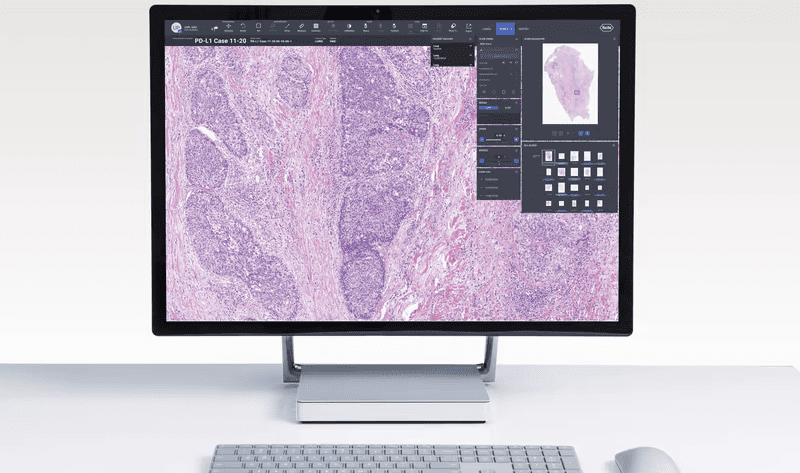It’s only been a few months since Roche started inviting artificial intelligence developers like Fierce 15 honoree PathAI into its cancer-focused digital pathology platform, but it’s already going all-in on the technological team-up.
The latest step in its mission to combine AI and digital pathology to improve cancer care will see Roche join forces with Bristol Myers Squibb. Alongside the Big Pharma, it’ll develop new algorithms that can be used in clinical trials to help develop highly specific drugs and more accurate companion diagnostics.
To start, the partnership will focus on developing two digital pathology algorithms to help with analysis of Roche’s existing clinical trial assays.
The first project will revolve around the Ventana PD-L1 assay, which has been approved by the FDA to be used as a companion diagnostic for non-small cell lung cancer patients. Roche’s digital pathology team will build an imaging analysis algorithm that’ll use AI to help interpret the results of the test.
The second, meanwhile, will build on one of the existing algorithms PathAI has imported into Roche’s Digital Pathology Open Environment. That AI will help improve analysis of tissue samples tested with Roche’s CD8 assay, which looks at a subtype of T cells crucial in the body’s fight against cancer.
In each of the projects, once the AI algorithms are ready, Bristol Myers will apply them to clinical trial samples with the aim of collecting biomarker data that can then be used to develop new cancer treatments highly personalized to a patient’s individual biology and the makeup of their tumors.
Additionally, knowledge of those cancer-specific biomarkers will help the pharma company better weed out the participants who will be best served by experimental treatments in future trials.
“We believe digital methods will bring significant improvements in standardization and interpretation of tissue-based assays and will enable broader access to tissue-based assays. The ability to more deeply interrogate images will present opportunities to better understand disease biology, potentially leading to expanded and improved drug development options and, ultimately, highly effective patient selection strategies,” Sarah Hersey, vice president of translational sciences and diagnostics at Bristol Myers, said in a statement.
Roche is far from the only company eager to meld AI and digital pathology. Last year, AI software developers Paige and Perspectum formed a partnership of their own to build a combined platform providing clinical researchers with automated tissue analysis and access to algorithms that can draw out more biomarker data from those analyses—all with a goal of improving diagnostics and therapeutics for liver disease.
Just this month, Alphabet’s life sciences offshoot Verily contributed its own tissue sample-reading AI to Lumea’s digital pathology platform, offering up an automated assessment of a prostate cancer tumor’s abnormality and aggressiveness.

